[Here’s a link to other forays around my map.]
“It is the slow and difficult
Trick of living, and finding it where you are.”― Mary Oliver

The summer sun was hot as I removed my bike helmet, wiped my face and looked around at the beginning of my grid square. Engraved on a large boulder beside the road was a memorial to a South African pilot killed in an engagement with a group of German Messerschmitt’s in the skies above where I stood. Appropriately, the ground all around was covered in bright red poppies. He had been a student at Cambridge when war broke out, and signed up to fly Hurricane fighter planes.
Also scattered on the ground nearby was the rubbish from someone’s KFC meal. The 10 piece Wicked Variety bucket contained 4790 calories, the large fries had 1440 and the large Pepsi had 750. A spectacular 6980 calories, which would fire the eater through an impressive 69.8 mile run. Although given that they were too lazy to put their rubbish in a bin, I doubted that this gorging of almost three times the daily recommended intake of calories was being used for ultra-distance running. At that moment a cockerel crowed, ironically, from behind a nearby hedge. I rarely hear cockerels around here, so the sound instead reminds me of travels in many other countries. So too the hot summer smell of soft asphalt reminded me other roads and other lands.
Summer is here, but it doesn’t yet feel that my own life is here yet. My arm and head ache from my second vaccine jab – signs that the world is returning to normal, but I still feel like a constrained, diminished version of who I used to be. Pinned over one wall of my shed is a small scale Ordnance Survey map spanning about 100km of southern England where I live. When I put it up, a few years ago, in order to focus my exploring closer to home, it felt like a parochial, restricted swathe of land. The span of this year’s single map looks tiny by comparison. And yet exploring my 20km map in real detail has revealed to me far more depth and possibility than I could have imagined. My weekly meanderings around one grid square have gone a long way to satisfying my restlessness, curiosity and wanderlust this year. So much so, in fact, that I feel something akin to vertigo at imagining not only my former hectic working life, but also the prospect of having the freedom of the entire globe to explore.
Stuck though I might feel, nature has no such qualms and is galloping ahead with or without me. A few weeks ago I was admiring the horse chestnut trees’ tall flowers and now they have already turned into mini conkers. Before I know it I’ll be gathering pocketfuls of fallen conkers as I do every autumn.

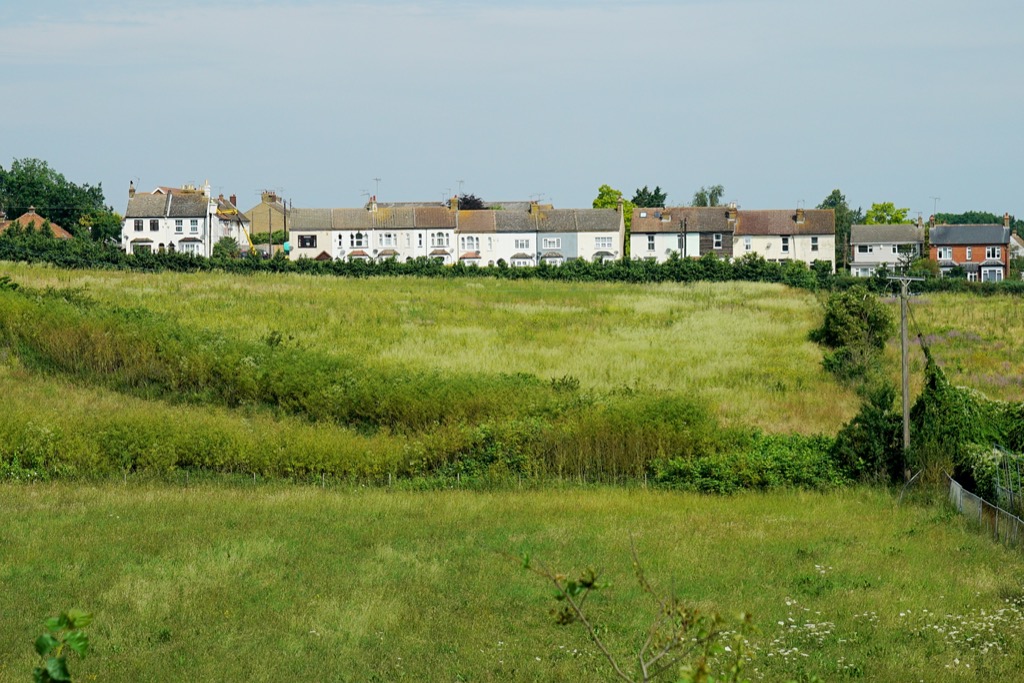
A narrow footpath led me between high spiked fences along the edge of a fishing lake, where members pay £1000 a year to catch 100lb catfish and 60lb carp. The fences are to stop people fishing for free, stealing the fish to stock other lakes, or anyone fancying the Eastern European delicacy of eating carp for Christmas dinner. For centuries, families throughout much of central Europe have relied on one simple main course for Christmas Eve dinner: the common carp.
But getting from river (or carp farm) to table is not so simple. As the tradition goes, the Christmas carp must first swim in the family bathtub for at least a day or two before being killed, cleaned and prepared. Carp are bottom feeders. The idea is that a few days swimming in clean water helps to flush mud from the fish’s digestive tract. Once the fish has been killed, it is cleaned, then soaked in milk (and sometimes salt) to dull the smell, lessen the “fishy” taste and sweeten the meat. It is sliced top to bottom, creating pieces in the shape of horseshoes, intended to bring good luck. Also on the menu is a cabbage soup that generally has at least four types of meat, including sausage. Traditionally, the only other dish is potato salad.
Once the meal ends, everyone checks under his plate to retrieve fish scales from the family carp. The scales signify luck for the year ahead, and people put them in their wallets and carry them until the following Christmas Eve.
It is a warm, bleached-out morning and I appreciate the shade as I cycle under the motorway. Up on scaffolding are two workmen in helmets and one in a turban wielding noisy power tools. From a garden centre and conservatory salesroom comes the smell of fried breakfasts, whilst the waste ground alongside it is a riot of yellow, red and purple flowers and white butterflies flit amongst the flowers. Further down the road I pass wheat fields, hay meadows, a water treatment works, then an old mill converted into industrial units. There is such a variety of land usage in each of these busy grid squares.
I squeeze down a narrow footpath between an industrial unit and the motorway, pushing through skeletal cow parsley past its prime. Who would ever use this path, I wonder? The first mushrooms of the season are pushing through the dank earth, and bindweed vines spiral up the chain link fence. Bindweed spirals to the left, whereas honeysuckle spirals right. Why? How? And what prompted Flanders and Swann to write an entire song about this?
‘The fragrant honeysuckle spirals clockwise to the sun,
And many other creepers do the same.
But some climb anti-clockwise, the bindweed does, for one,
Or Convolvulus, to give her proper name.
Rooted on either side a door, one of each species grew,
And raced towards the window-ledge above.
Each corkscrewed to the lintel in the only way it knew,
Where they stopped, touched tendrils, smiled, and fell in love.’
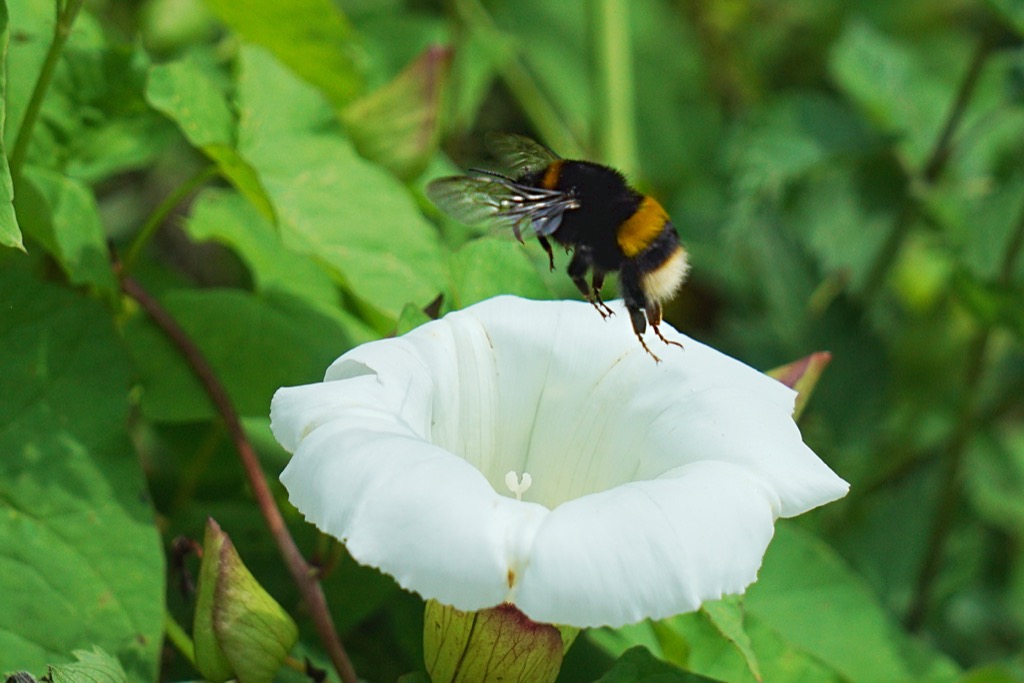

I like bindweed’s big, bold flowers, white trumpets for bumblebees to snuffle and forage inside. Yet gardeners, once again, loathe bindweed. It is notoriously hard to get rid of. If left unchecked, it will outcompete even large shrubs and small trees for light, weakening them within a season. The roots can grow up to three metres long and the seed can persist for 30 years in soil. The roots near the top of the soil can quickly become stolons, or runners. They zoom along the surface until they hit something to climb, at which point they put down a new root system and shoot up.
Past the smell of a bonfire burning plastic now. Past portakabins, hard standings, metal sheds, white vans. This footpath links nowhere with nowhere in an ugly way. Still, I’m pleased that it is here. It spirals left, like bindweed, up onto a footpath across the motorway. The noise hits me, along with the smell of fumes. Motorways from close up are all intimidating speed, noise, power, and urgency. What do people think as they roar beneath me, briefly noticing me standing with my bicycle on the bridge above them before barrelling onwards with their journeys. I try to work out what I feel when the positions are reversed; what do I feel when I zoom in traffic beneath somebody looking down? I can’t quite put my finger on it with all this rushing and noise.

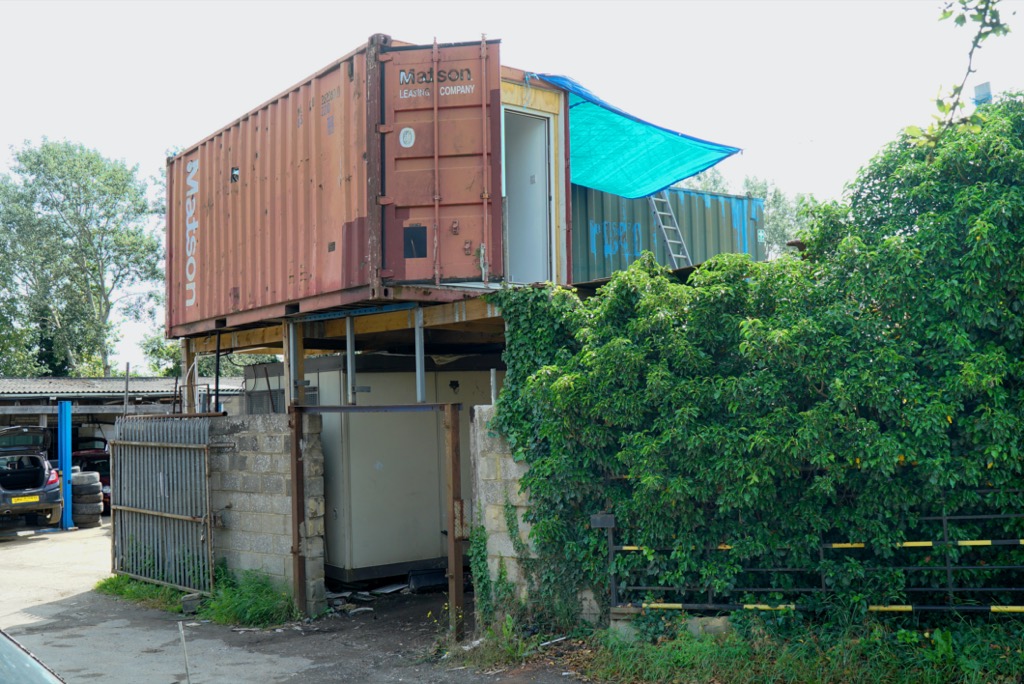
On the far side of the motorway was a car scrap yard and mechanics whose offices are two shipping containers stacked on top of each other. A large flapping tarpaulin kept some of the sun’s heat off and provided a little shade for the massive flat screen TV fixed to the upper container’s walls. I heard the radio playing The Living Years (aptly by Mike and the Mechanics). It’s not a song I particularly like but hearing it gave me an instant flashback to the classroom I was in when I first heard it. The power of music to evoke memories is well-known and extraordinary. Neuroimaging has shown that songs stimulate many different areas of the brain, and give us a big hit of dopamine while they’re at it. Furthermore, hearing the same songs over and over—especially during particularly memorable events or formative periods in our lives—can make them stick, sometimes for life. We’re very good at recognising music that we’ve heard before, and associating it with certain memories. Scientists have even found that babies can do it from birth. When it comes to the relationship between nostalgia and music, something researchers know for sure is that the music we listened to as teenagers will continue to be incredibly influential on us for the rest of our lives. And there are neurological explanations for this. Your brain develops during these years, and so it stands to reason that the music you listened to as a teenager becomes quite literally formative. In a 2008 study from the University of Leeds, memory researchers asserted that not all our memories are created equal: the ones we reserve from our formative teenage years, as well as those from our early twenties, are the ones we return to and cherish the most. They call this period the “reminiscence bump”, when human beings retain more memories than they will during any other life phases. On average, men’s favourite songs were released when they were aged between 13 and 16. Women’s favourite songs were solidified when they were slightly younger, between the ages of 11 and 14.
I passed a horse field dotted with yellow ragwort plants. Like many other wildflowers, ragwort is poisonous to animals – so it’s not good if it gets mixed into the dry hay fed to horses and cattle. But few other plants are as scapegoated as ragwort. Ragwort is mildly poisonous, but the taste of the plant is usually off-putting to livestock. That’s why it’s not unusual to see horses in fields chomping on grass but leaving the ragwort. The danger comes if ragwort that’s been cut and dried gets mixed up in dry hay fed to livestock. But at the same time, ragwort is an important native plant that helps feed dozens of bees, moths, other insects and birds.
Summoning both speed and nerve I rode at top speed down The Nation’s Worst Footpath®. Barely a metre-wide between two high fences, the path was jammed with nettles. It was like running the gauntlet on some comedy Japanese game show. ‘Gauntlet’ has nothing to do with an armoured glove, but originates from Swedish: gatlopp, from gata “lane” and lopp “course, running”. It was borrowed into English in the 17th century, probably from English and Swedish soldiers fighting in the Protestant armies during the Thirty Years’ War.

I escaped from Nettle Hell® into a peaceful churchyard. A few discarded Budweiser bottles were lined neatly against the wall, perhaps on the thinking that tidy littering is preferable to untidy. One gravestone amongst the long grass had the inscription of ‘Deep peace of the quiet Earth to you’, taken from the old Gaelic blessing,
‘Deep peace of the running wave to you.
Deep peace of the flowing air to you.
Deep peace of the quiet earth to you.
Deep peace of the shining stars to you.
Deep peace of the gentle night to you.
Moon and stars pour their healing light on you.
Deep peace of Christ,
of Christ the light of the world to you.
Deep peace of Christ to you.’
People have worshipped here since the 11th Century and today the church doors were flung wide open to welcome in the summer breeze. I heard an elderly woman inside saying, “I know people will think I’m odd, that poppies are only for Remembrance Day in November. But on this day thousands of young men went over the top on the first day of the Somme, so I’m putting out poppies.”
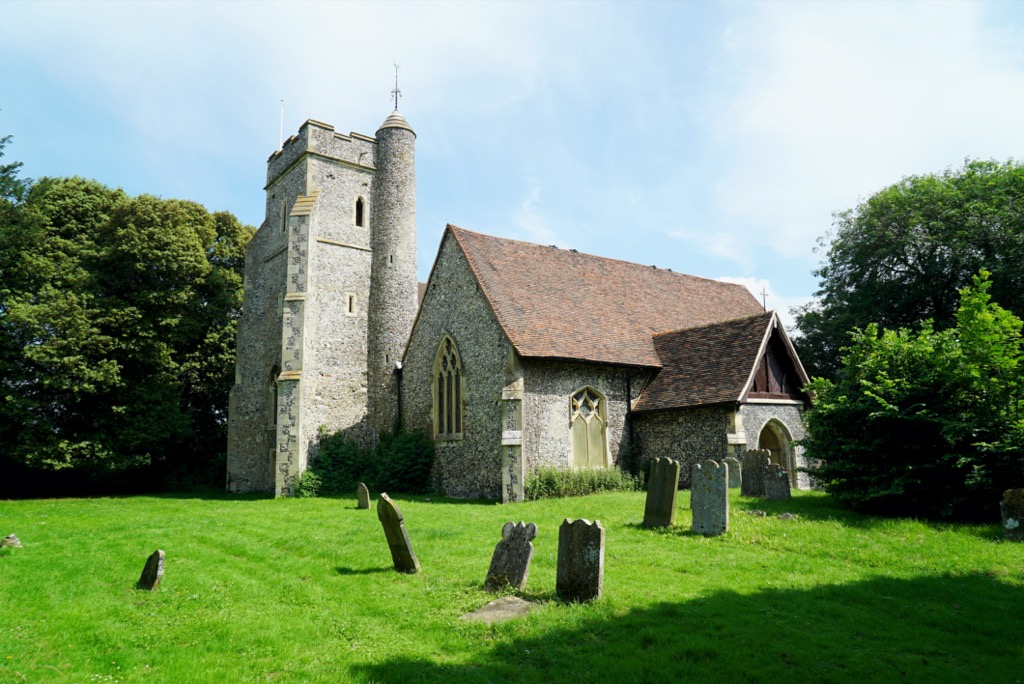
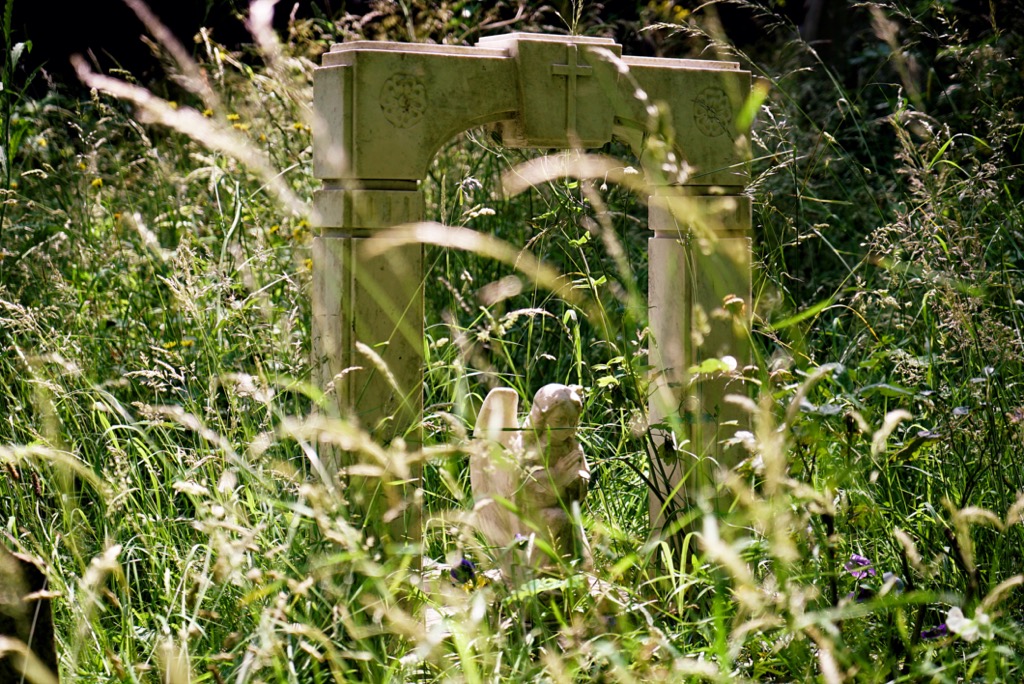
Growing in the churchyard was a majestic yew, bent with age and its trunk split and hollow. Beneath it were a pair of gravestones, on the back of which was a carved inscription about the woman ‘who caused this yew tree to be planted at the foot of the Grave of her Grandmother in the year 1742’. It must be quite unusual to know the precise age of a tree, and I love the idea of planting a tree when you bury a loved one.
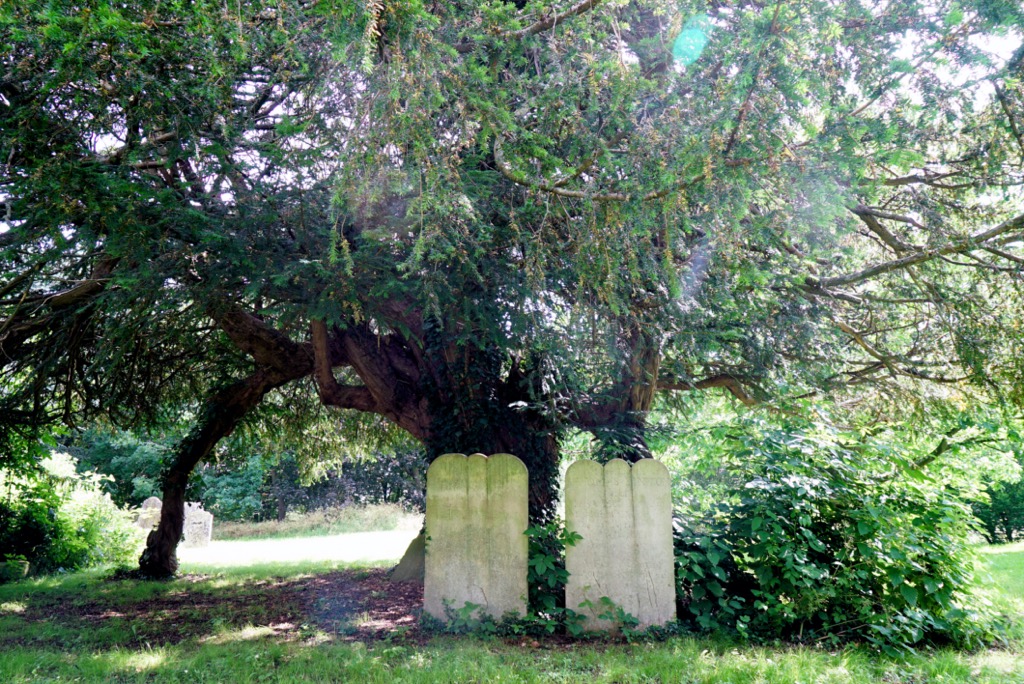

Heading back across my grid square I pushed my bike through lovely knee-deep hay meadows alongside the motorway. It was rich with flowering clover, though I failed to find a lucky four-leafed clover. For early Christians, it represented the holy cross and allowed the perception of evil. They believed Eve carried a four-leafed clover with her when she was thrown out of Eden to remind her of paradise lost. In medieval times, a single woman who put one in her shoe would marry the first wealthy and eligible man she met. The same charm pinned over her door would ensnare the first unmarried man to pass through. Strewn in the path of a rural bride, clover gave her protection and the promise of a successful marriage. It provided fodder and silage, enriched poor soil and banished snakes. Two people chewing a four-leafed clover together were bound to fall in love and anyone finding a five-leafed one was assured of exceptional powers and great fortune.
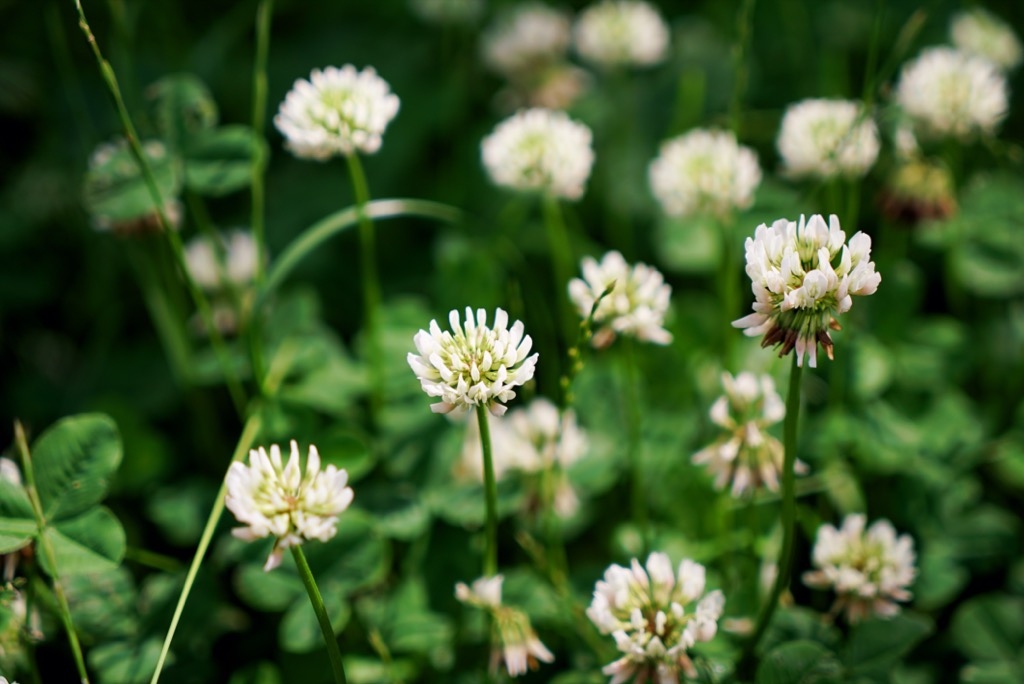
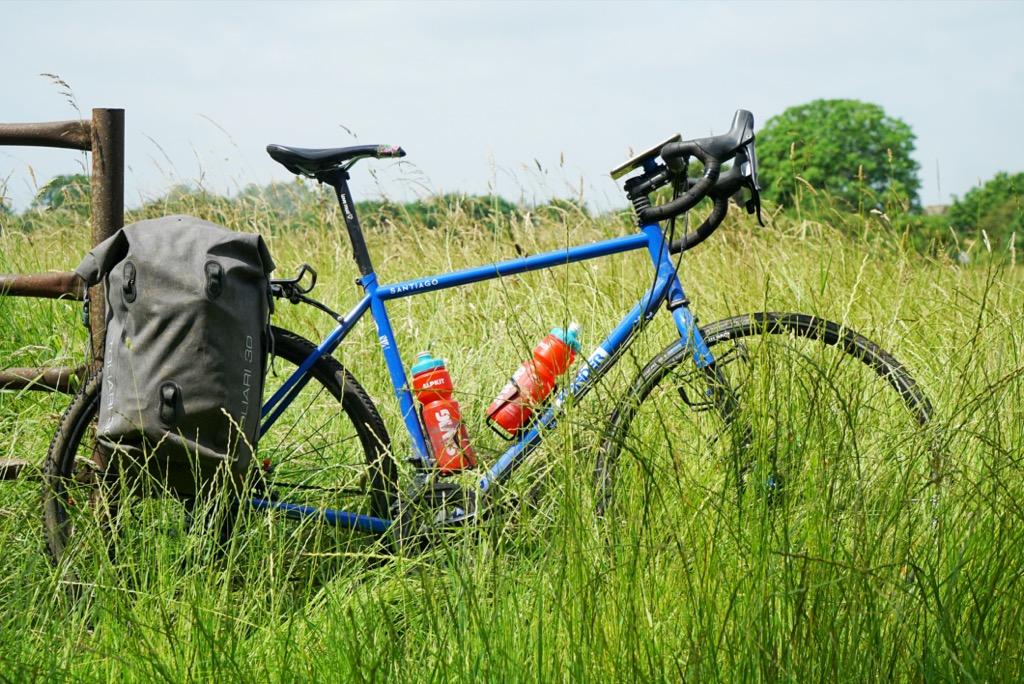
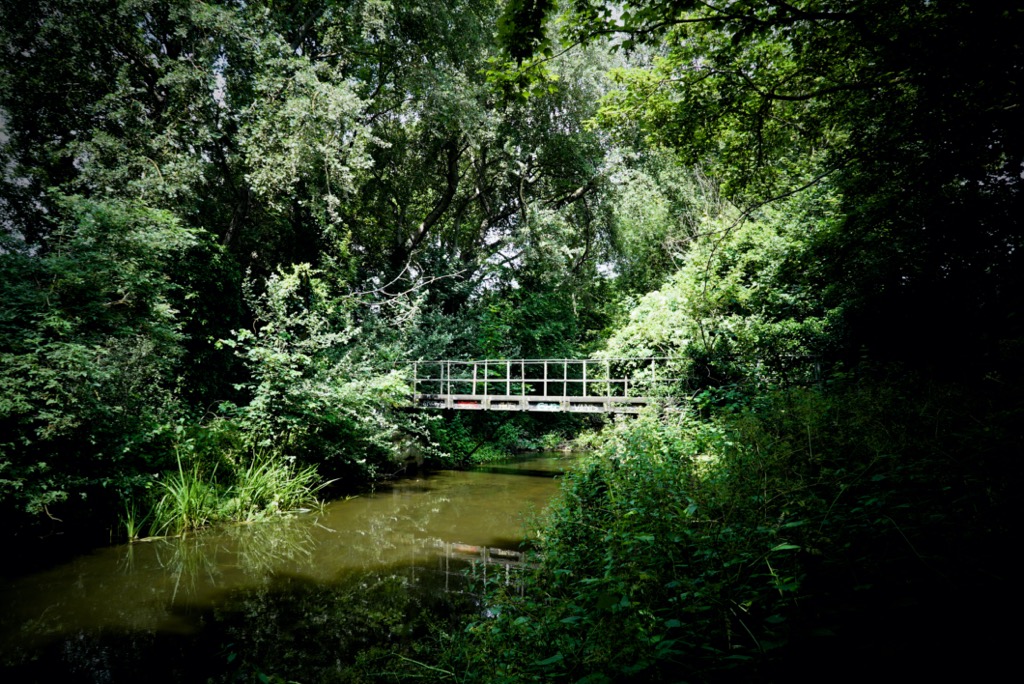
Elsewhere in the world, other clover species have garnered a variety of colloquial and rather bewildering names, such as foothill, forest, subterranean, tomcat, cow, buffalo, bull, knotted, notchleaf, bearded, cup, clammy, fewflower, sulphur, whitetip, woollyhead and thimble. Others are known by their location — Persian, Egyptian, Hungarian, Chilean and Santa Cruz.
Red clover is one of the world’s oldest crops — the Greeks and Romans fed it to cattle and warhorses. It had great medicinal value, too. Pliny recommended it for poisonous bites and the ancient Chinese prescription for whooping cough survived into medieval Europe and crossed the Atlantic with Dutch settlers.
Traditionally, it served as a diuretic, expectorant, blood purifier, antibiotic, appetite suppressant, relaxant and a treatment for cancer, heart and lung problems. Infused in warm water, it was an aphrodisiac. Freckles were banished from a face washed with red clover in dawn dew and, added to bath water, it aided financial decisions. Few such nostrums are credible, but modern analysis has identified vitamins B and C, plus phytoestrogens, judged to be relevant in treating menopausal and prostate problems.
As a legume crop belonging to the bean and pea family of plants, clover fixes nitrogen in the soil. That is, it partners with beneficial bacteria to transform nitrogen gas that resides in air pockets within the soil into stable organic compounds that nourishes surrounding plants.
I have not seen so many butterflies in a long time. Clouds of meadow brown butterflies busied themselves amongst bright purple knapweed flowers. Not for the first time, I tried to imagine this grid square in six months’ time and an opposite season. The state I find each grid square in is true only on that day: visit in mid-winter, pouring rain, blazing sun, or even a different frame of mind and my discoveries would be different every time.
I was glad to be here, in this square, on a warm July day, for the shallow, burbling stream through the meadow looked very appetising for a dip. Everything looked very mellow, as no doubt appreciated by whoever had spray-painted ‘Ganja is life’ on the small wooden footbridge. The stream ran wide but shallow beneath a colossal concrete motorway bridge. Each time I have passed this way the walls have been covered in different elaborate murals, 30-feet high and impressive. Last time I was here there was a manic-looking Boris Johnson, 10-feet tall and spraying an aerosol can labelled ‘PANIC’. Today Boris was gone, painted over with new tags and patterns, including a vast HELCH from a graffiti artist whose tags have apparently annoyed the Queen.


At one point the stream narrowed and deepened as it flowed round a bend. I stripped off and waded into the sandy shallows as tiny fish flitted round my toes and blue damselflies skimmed the surface. River weed waved in the clear, cool water and provided a soft cushion for me as I lay down in the stream and submerged my head. Opening my eyes under water, I enjoyed the dappled, blurred green-ness of the river and listened to the burbling water rushing round my ears. The rushing motorway suddenly felt far away.


Afterwards I sat on the riverbank, my bare torso drying in the warm sunshine as I drank the coffee I had brewed on my camping stove ready for when I got out of the river. I bloody love England in the summer sunshine. Right now, I felt no need for anything more than these few square kilometres of my single map.
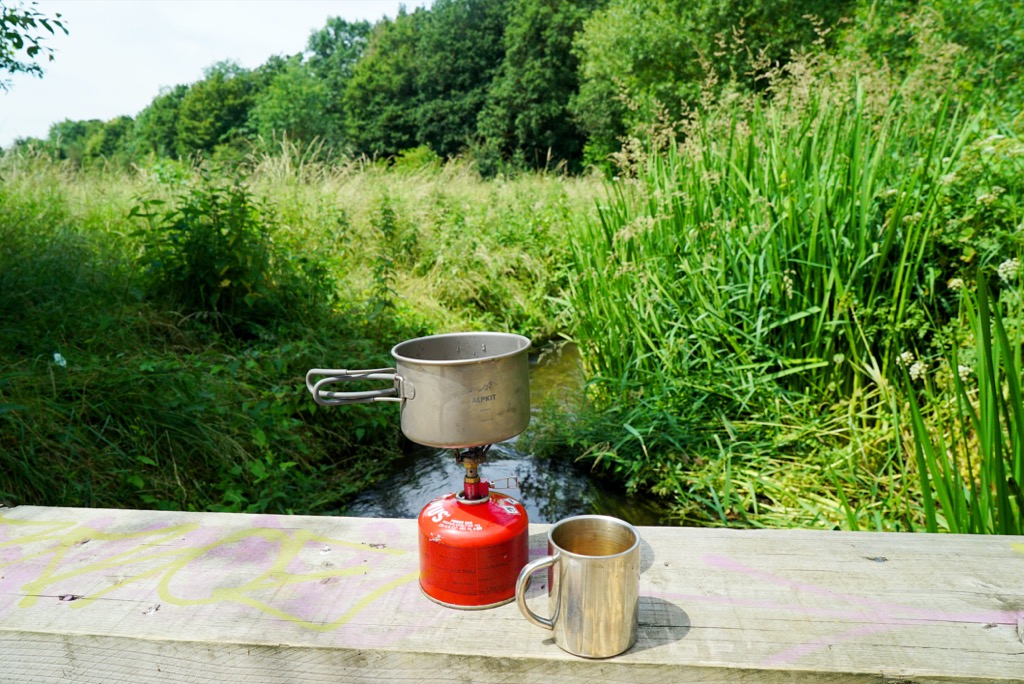




Lovely story. Thanks for writing and sharing it.